Karl Bodmer was a European of many names and accomplishments, but his reputation received a transatlantic boost in 1832. That year Prince Maximilian, a Prussian explorer, ethnologist and naturalist, was planning an expedition into the North American frontier and, in a rare moment of humility, realized he needed a professional artist to supplement his own considerable skill as an illustrator. He tapped Bodmer for the task.
Born in 1782, Alexander Philipp Maximilian was the hereditary ruler of Wied-Neuwied, a Prussian-annexed state along the Rhine River south of Bonn. During the Napoléonic wars he had served as a major of hussars in the Prussian army. In early 1815, with the exiled French emperor seemingly neutralized on Elba in the Mediterranean, the young prince, inspired by the writings of Prussian explorer-scientist Alexander von Humboldt, had taken military leave and embarked on a two-year voyage to southeast Brazil. Maximilian was wandering the rainforest, rendering illustrations of belligerent naked tribesmen, as the Battle of Waterloo raged in Belgium that summer. His resulting writings and sketches had garnered him some celebrity in Europe, but by 1832 the prince, toothless and pushing 50, realized that were he to make one more excursion abroad, he had better do so soon. He aimed to do a comparative study of Plains Indians with the tribes he’d encountered in Brazil, and this time he thought to bring along a proper artist.
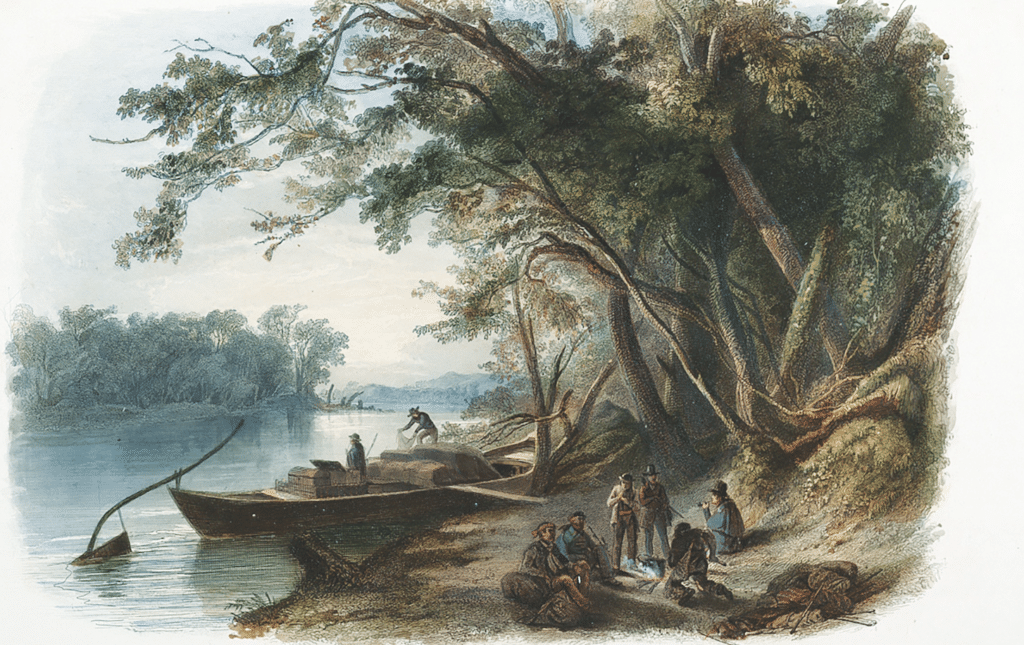
On a January 1832 visit to Koblenz, farther south along the Rhine, Maximilian met Bodmer, a watercolorist and engraver born in 1809 in Zurich. Prince Max, as he was known informally, had enough humility to recognize a superior artist and convinced Bodmer to join his planned expedition to North America. The prince also hired hunter and taxidermist David Dreidoppel, and on May 17 the trio sailed for North America. In a letter to his brother Prince Max wrote that Bodmer “is a lively, very good man and companion, seems well educated and is very pleasant and very suitable for me; I am glad I picked him. He makes no demands, and in diligence he is never lacking.”
Their ship arrived in Boston on the Fourth of July to much pomp and celebration, and that evening the prince and his party took in a fireworks display. After visits to cholera-riddled New York and Philadelphia, the trio set out for the West. On reaching New Harmony, Ind., that October, the party made an unplanned layover of nearly five months. Having contracted what they suspected to be cholera, the prince and Dreidoppel were both bedridden. Bodmer, who dodged the ailment, made a side trip by steamboat to visit New Orleans while they recuperated.
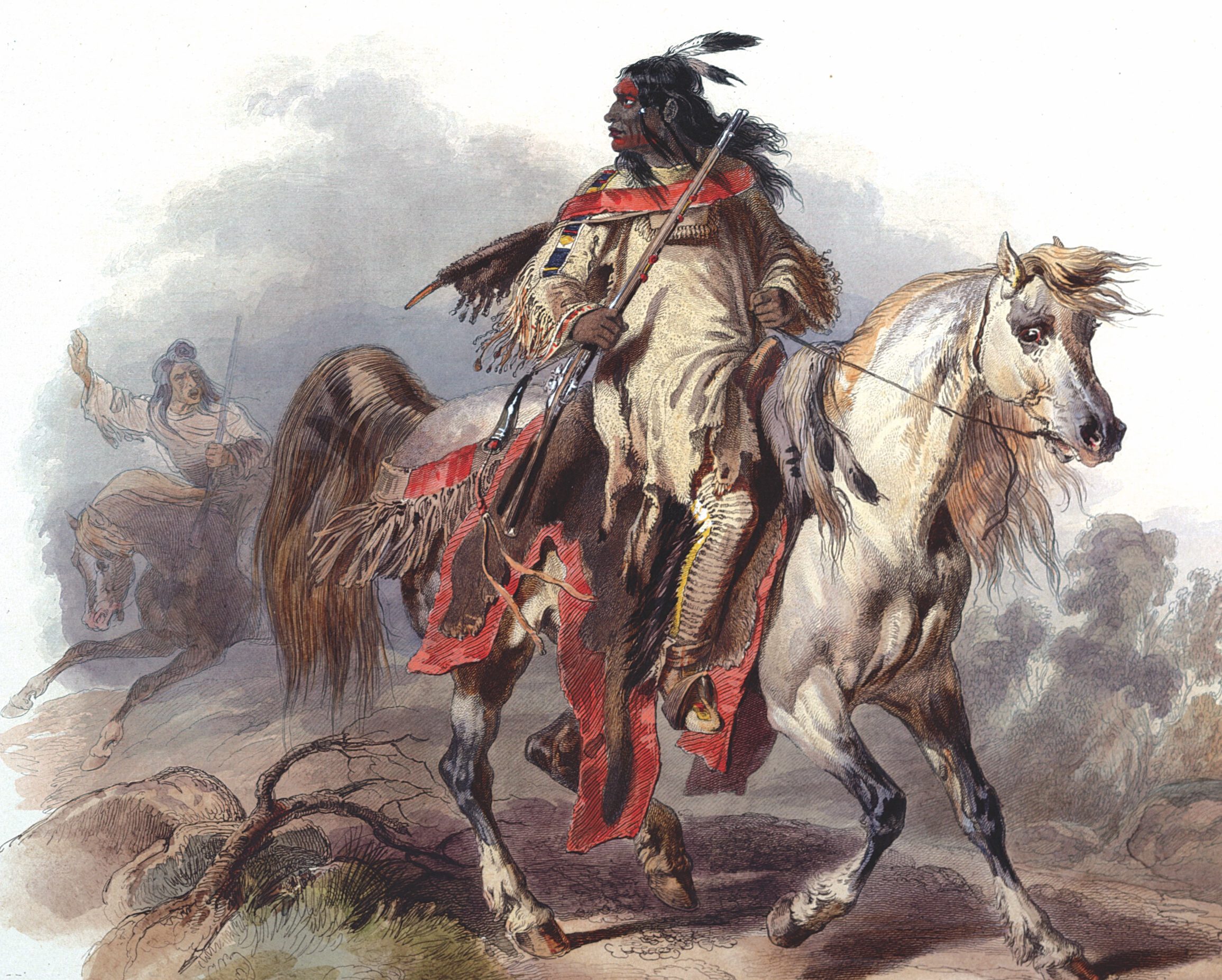
Resuming their journey on March 16, 1833, the trio traveled by steamboat down the Ohio and then up the Mississippi to St. Louis. There they conferred with Indian Affairs Superintendent William Clark (of Corps of Discovery fame), saw their first tribesmen and arranged to travel up the Missouri. On April 10 the trio headed upriver on the steamboat Yellow Stone under the protection of the American Fur Co., which, they were assured, was the safest way to see Indians without unfortunate consequences. The trip was plenty bad enough. Faced with snags and sandbars, the crew had to repeatedly unload and load the boat, and in the process they tossed some of Prince Max’s botanical specimens overboard, till he raised strenuous objections. (During the return journey flooding damaged several crates of specimens, while a steamboat transporting other crates caught fire, destroying another precious cache.) Finally, officials at Leavenworth threatened to confiscate the brandy the trio had brought to preserve animal specimens, as the introduction of “ardent spirits” into Indian country was prohibited.
The German-Swiss party had far less trouble with the Indians than anticipated. In recent years American artist George Catlin had covered the same ground, and after some deliberation the Indians had decided that faithfully rendered watercolor portraits did not necessarily capture their souls, as almost no one Catlin had painted had died. Some tribesmen still suspected such portraits could cut a man’s spirit in half.
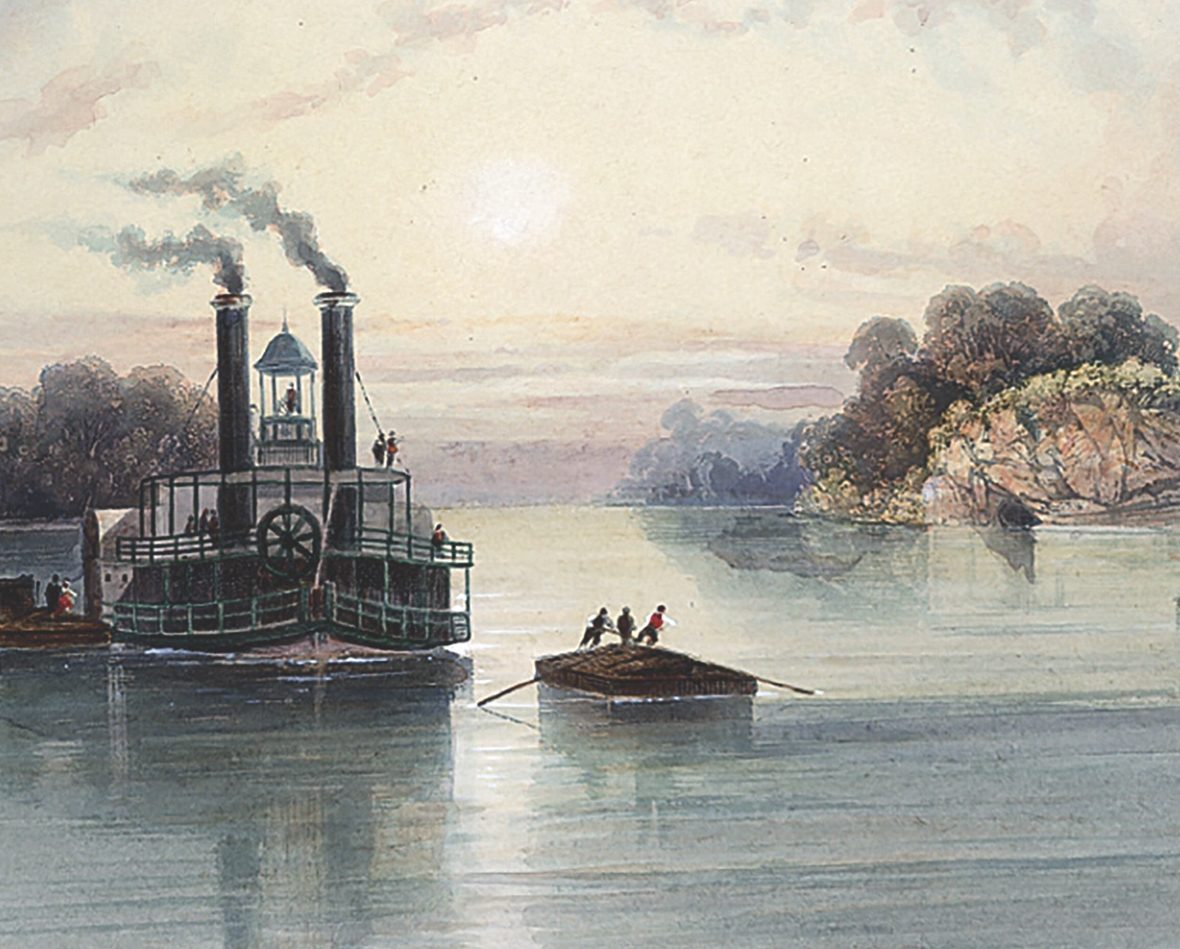
One Indian was indignant after Bodmer rendered his portrait but didn’t provide him a copy. In retaliation the Indian demanded a brush and easel to capture the artist on canvas, a likeness Prince Max avowed “possessed some talent for the art.” Bodmer amused his Indian subjects during sittings with a music box—concealed in which, one guileless Mandan concluded, must have been a tiny German at a miniature keyboard. Prince Max, meanwhile, doled out tobacco. The stoic pose tribal Indians assumed when confronted by outsiders made them reliably steady models, as it did in the photographic era of later decades.
Some of the fur company boatmen found the prince a bit authoritarian. “Hardly a bluff or a valley on the whole upper Missouri,” one frontiersman remembered, “has not repeated, in an angry tone with a strong Teutonic accent, the names of Boardman [Bodmer] and Tritripel [Dreidoppel]”
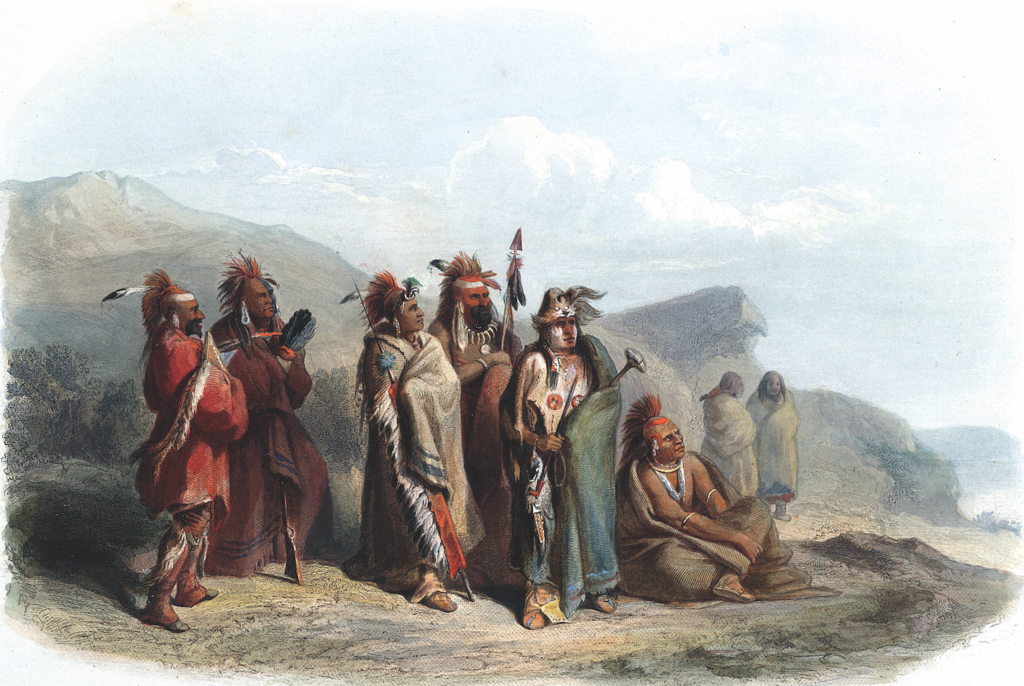
The trio made it as far as Fort MacKenzie, the fur company’s newly established trading post on the Missouri in Blackfeet country (present-day Montana). In late August a war party of Assiniboines and Crees attacked friendly Piegan Blackfeet encamped just outside the post. Roused from his sleep, Prince Max joined others and courageously rallied to the latter’s defense, climbing to the ramparts with musket in hand. Historian Bernard De Voto embellishes the account with a tale that in his excited haste the prince rammed a double charge down the barrel, the force of the resulting explosion knocking him on his backside. It wasn’t embarrassment, however, but the potential danger that prompted the prince to quietly call off an extended trip to the Rocky Mountains.
On the return trip downriver the party overwintered at Fort Clark (in present-day North Dakota), where Prince Max succumbed to another illness and feared for his life. “The cook,” he recalled, “expressed his opinion that my illness must be the scurvy.” Based on prior outbreaks, the cook advised the prince to eat wild onion (Allium textile), a small white flowering plant common to the prairie. “Indian children accordingly furnished me with an abundance of this plant and its bulbs,” the prince recalled. “These were cut up small, like spinage [sic], and I ate a quantity of them. On the fourth day the swelling of my leg had considerably subsided, and I gained strength daily.”
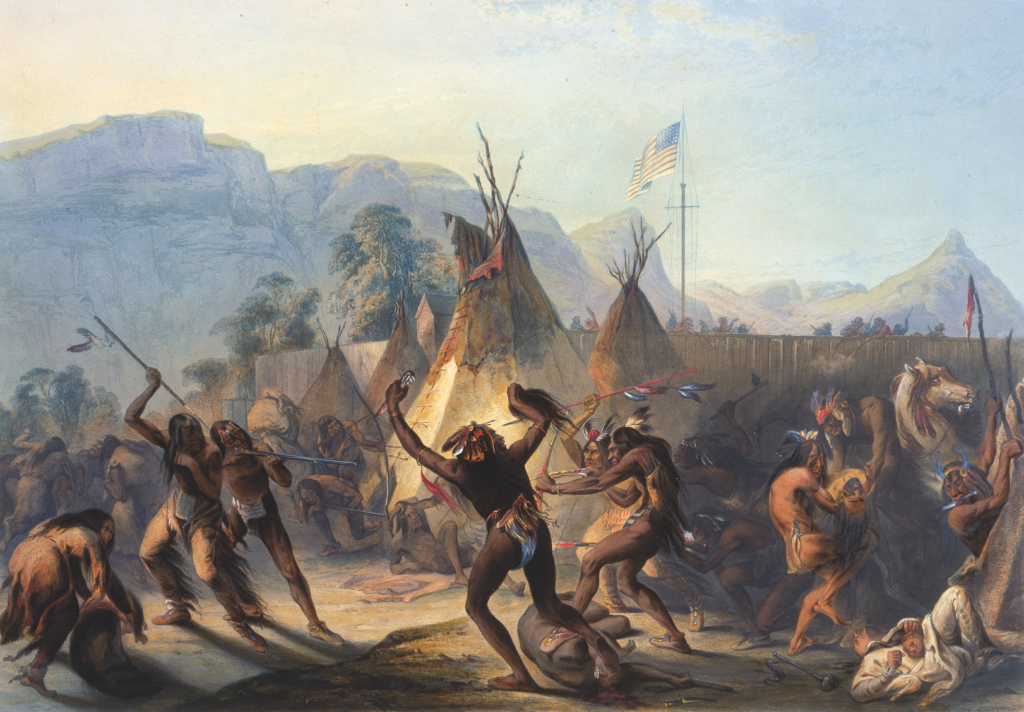
So it was Indian children helped save Prince Max, and Prince Max, through Bodmer’s paintings, helped save the Indians—at least in memory—by capturing their culture before trade goods changed their mode of dress and alcohol and disease devastated their populations. Prince Max returned home to Wied-Neuwied in late August 1834, three years before smallpox all but exterminated the Mandans and ravaged the Hidatsas and Arikaras, among Bodmer’s favorite subjects. By the time Prince Max died, old and full of honors, in 1867, the Indian wars had spread to the Plains, and no such ethnographic expedition would have been possible.
For his part, Bodmer remembered “his kind and informative highness” for the rest of his own long life. On Oct. 30, 1893, the 84-year-old artist, by then a French citizen calling himself Charles Bodmer, died in Paris. He had lived just long enough to hear about the tragic 1890 clash along a South Dakota creek named Wounded Knee, among the last major actions in the Indian wars. By then nearly all Plains Indians were U.S. dependents living on reservations. Prince Max had secreted away some 400 of Bodmer’s original paintings and his own meticulous notes at the ancestral castle, and whatever the tragedy of the original Americans, the Prussian royal and his world-class hired Swiss painter had left a superb record of an era.

